
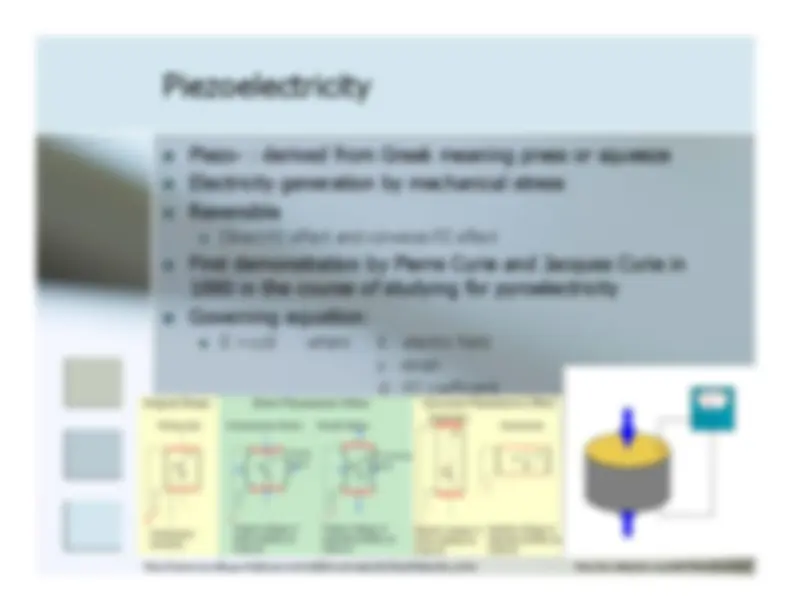
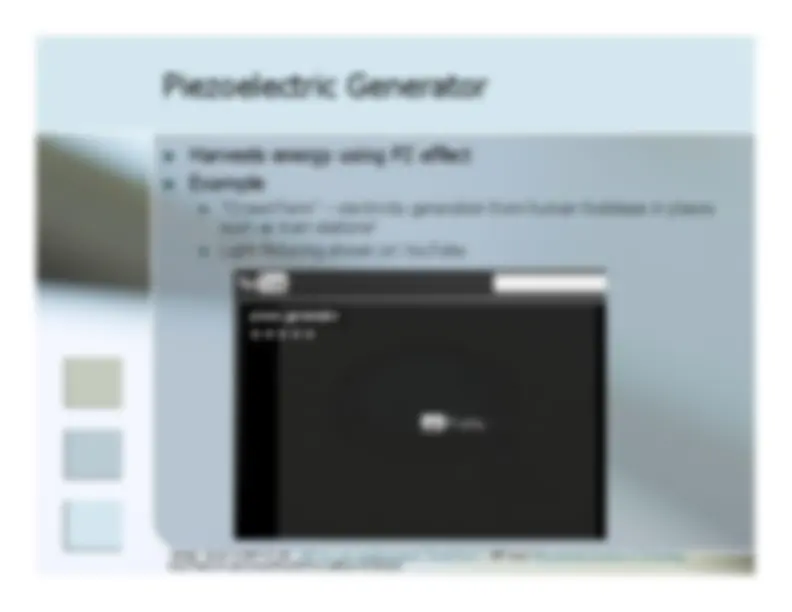
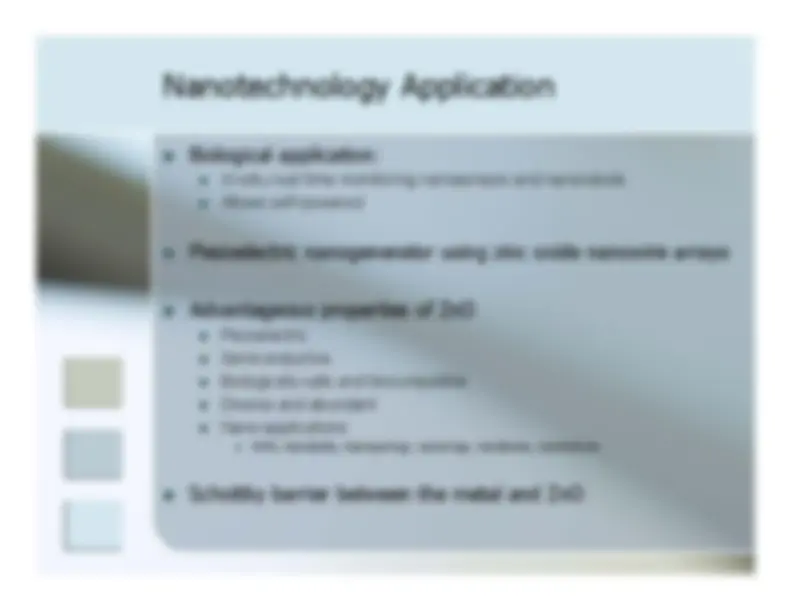
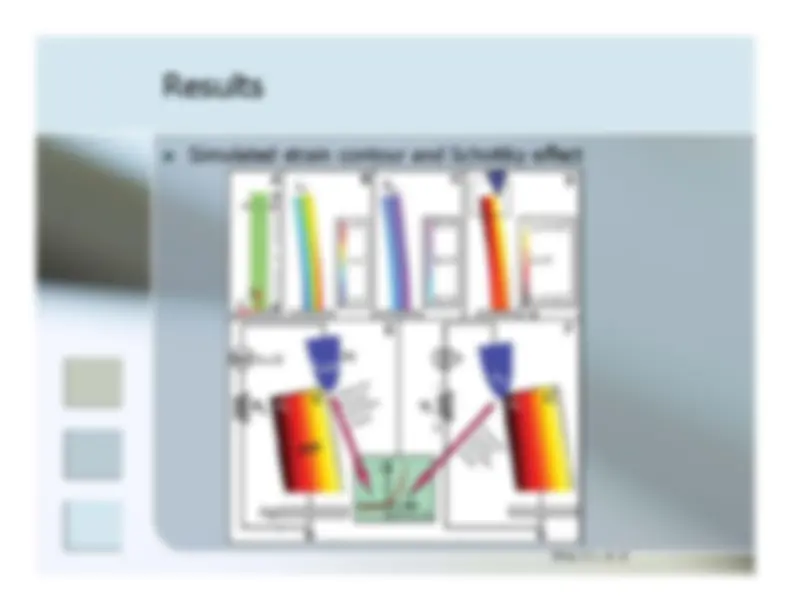
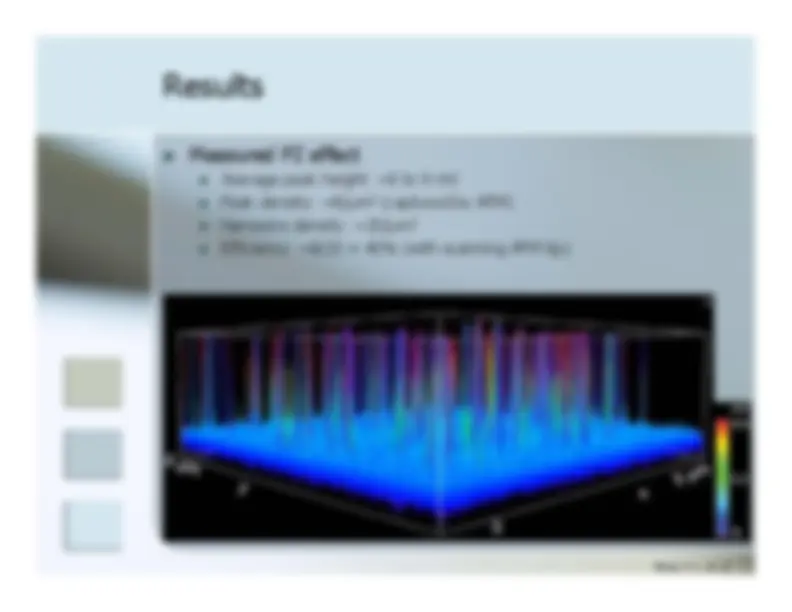
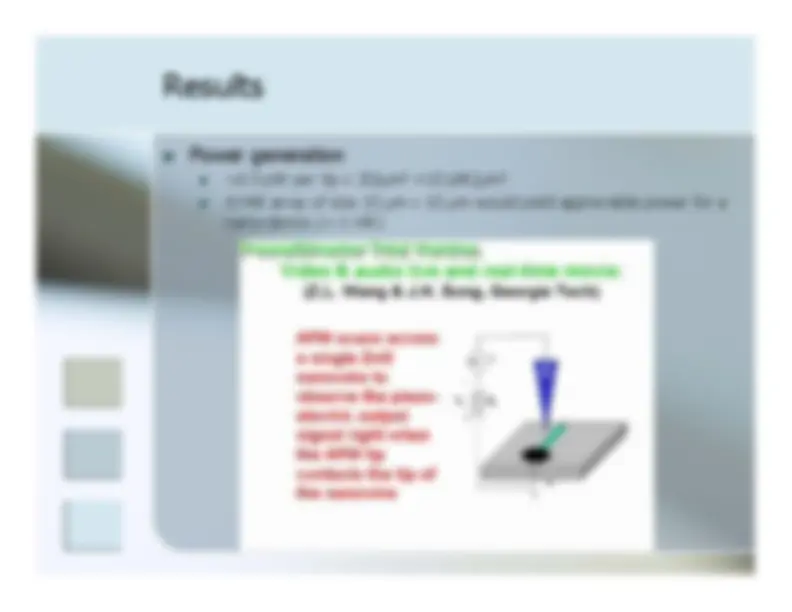
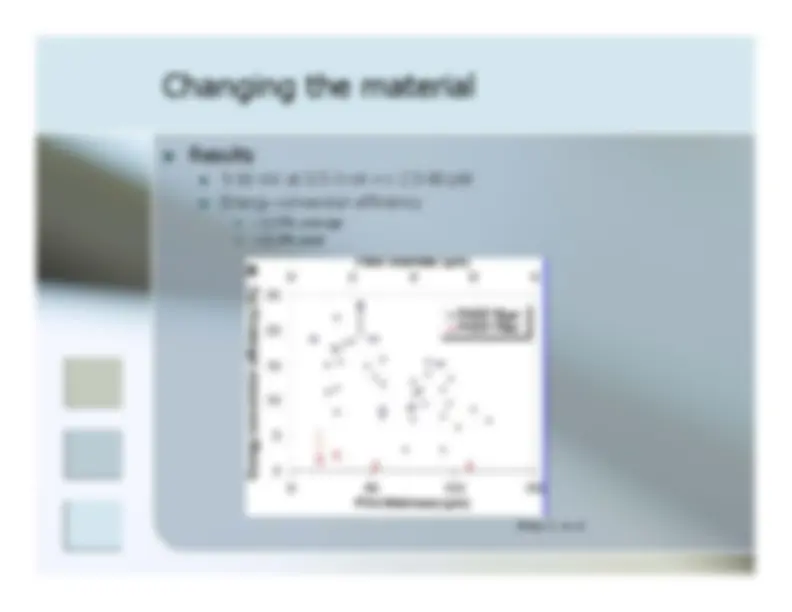
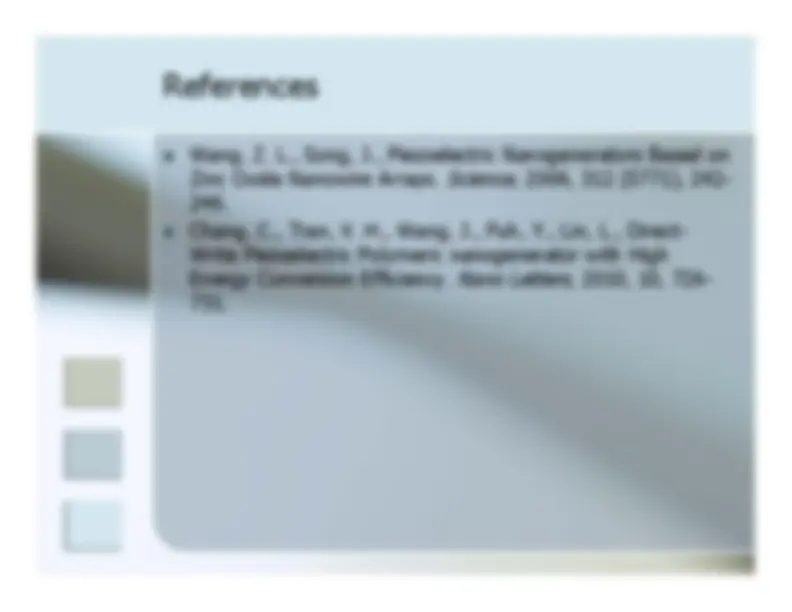
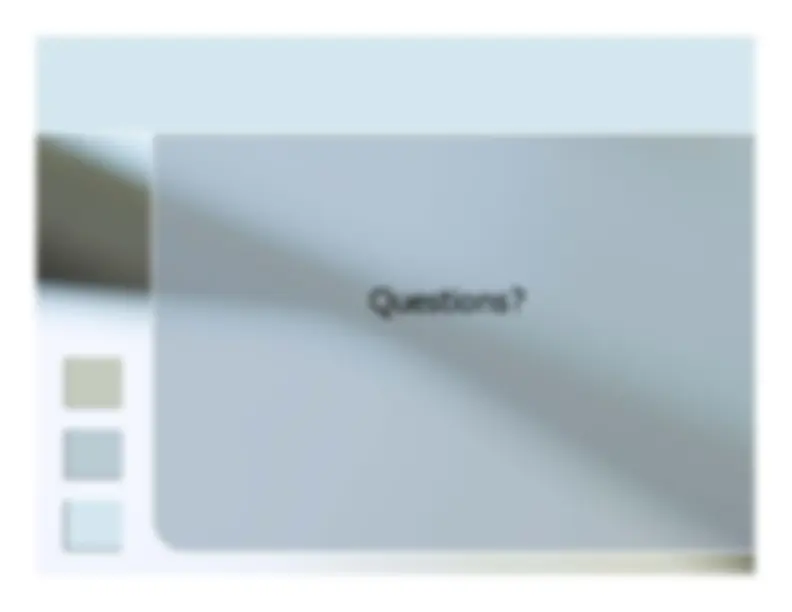

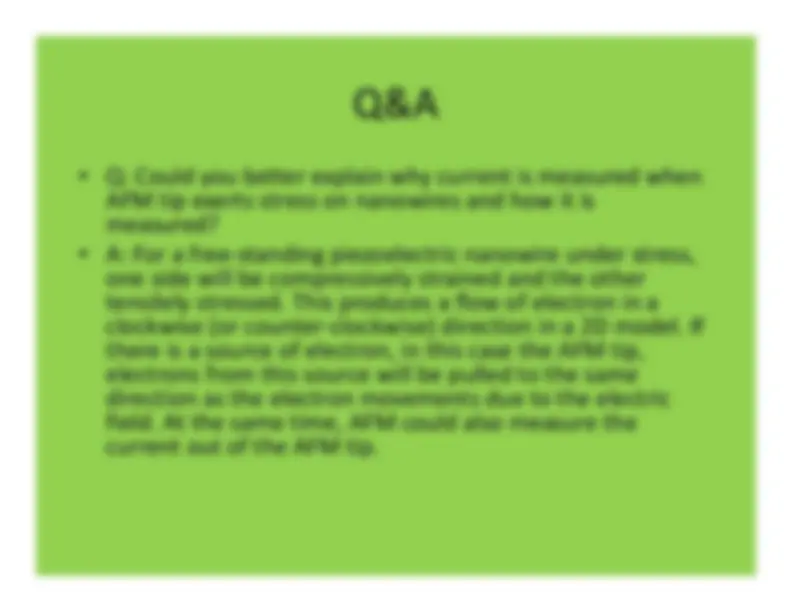
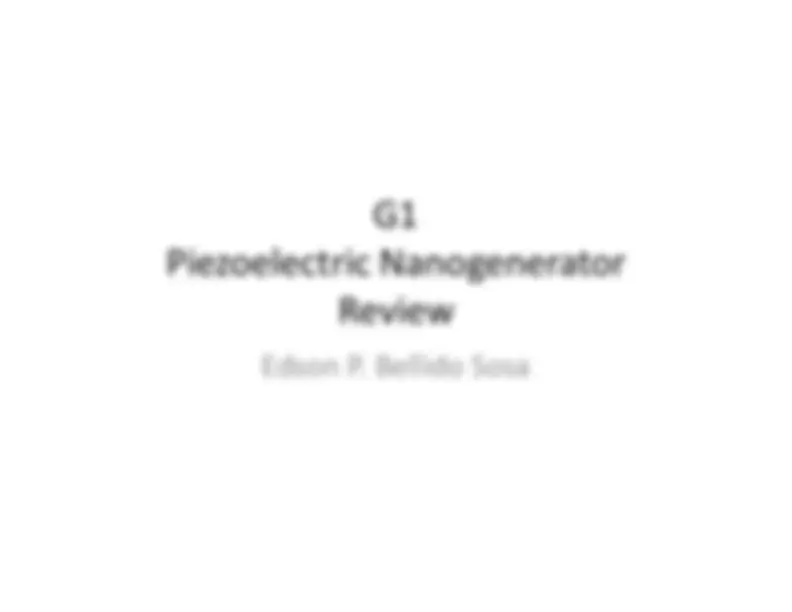
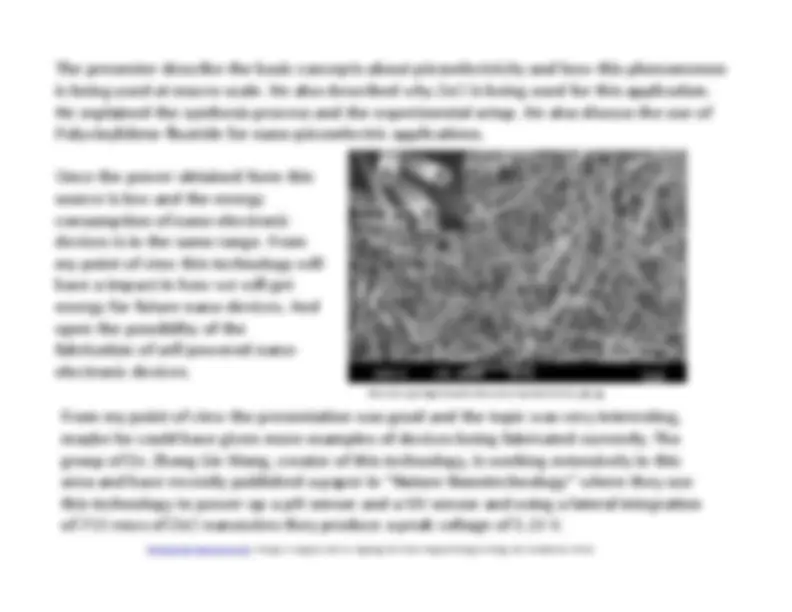
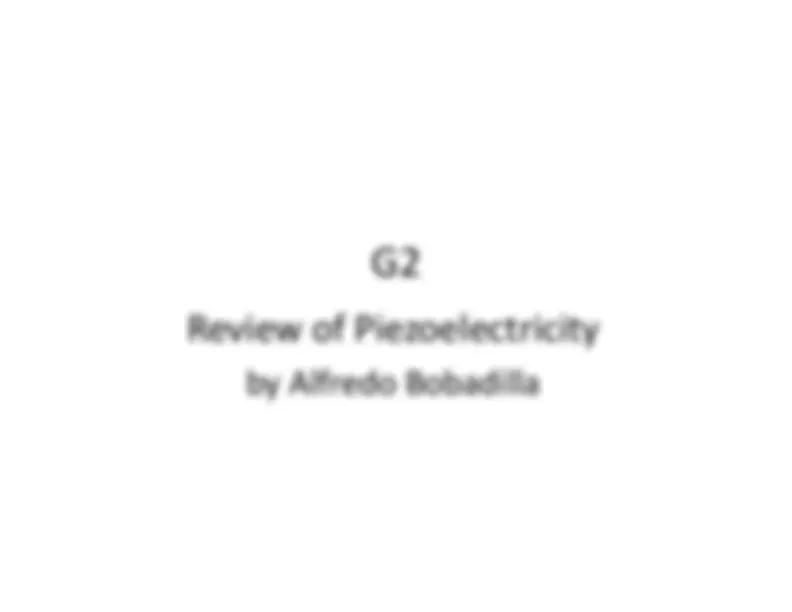
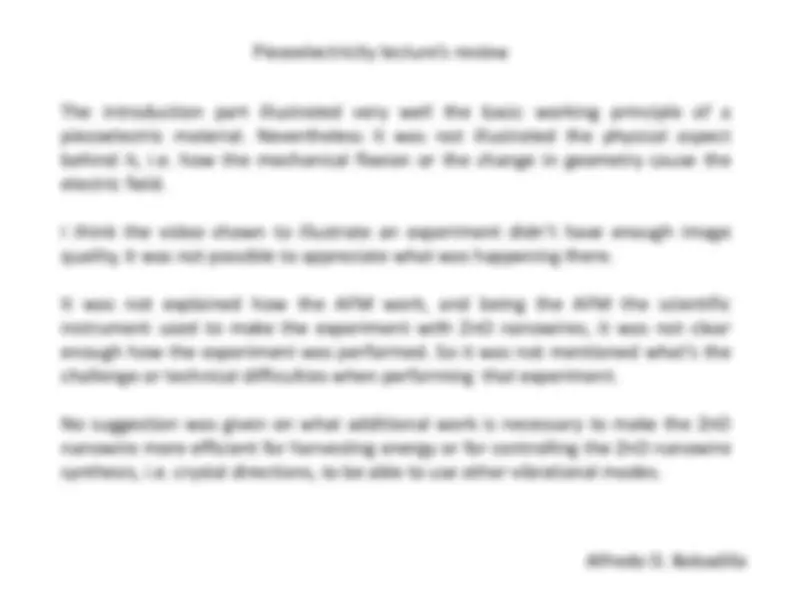
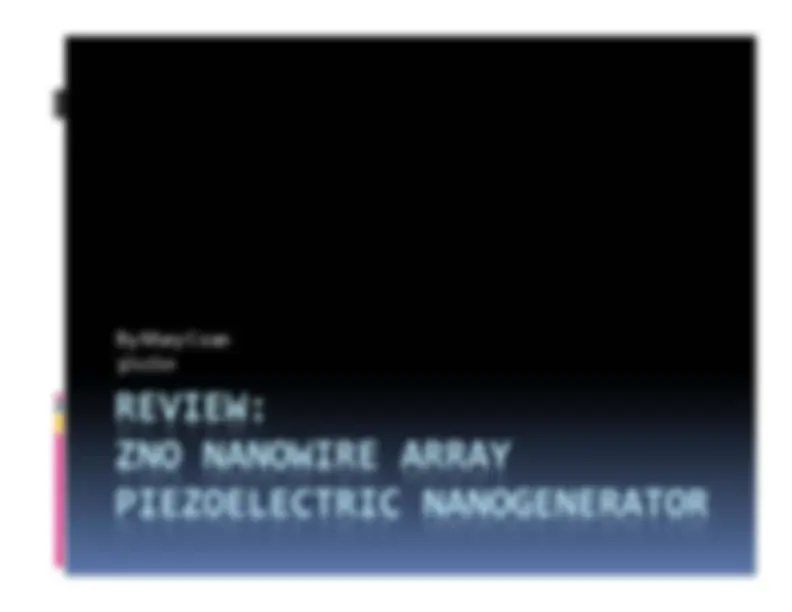
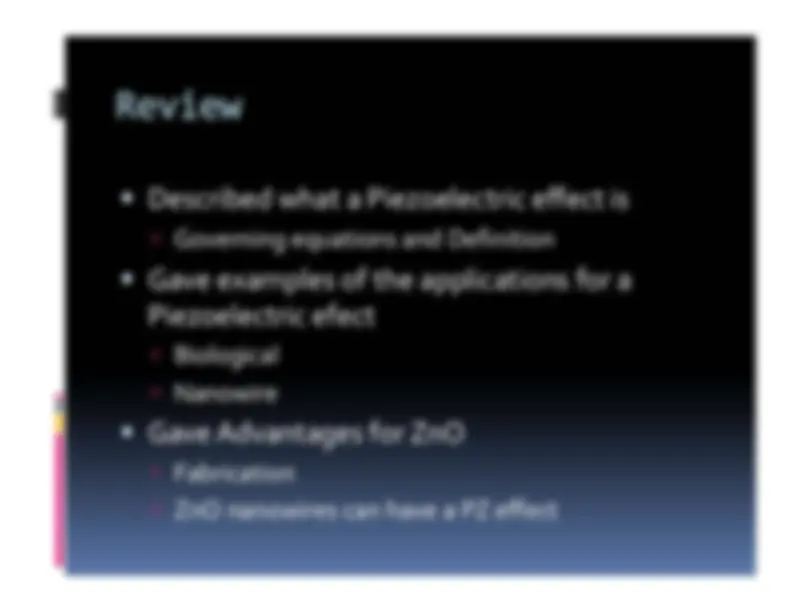
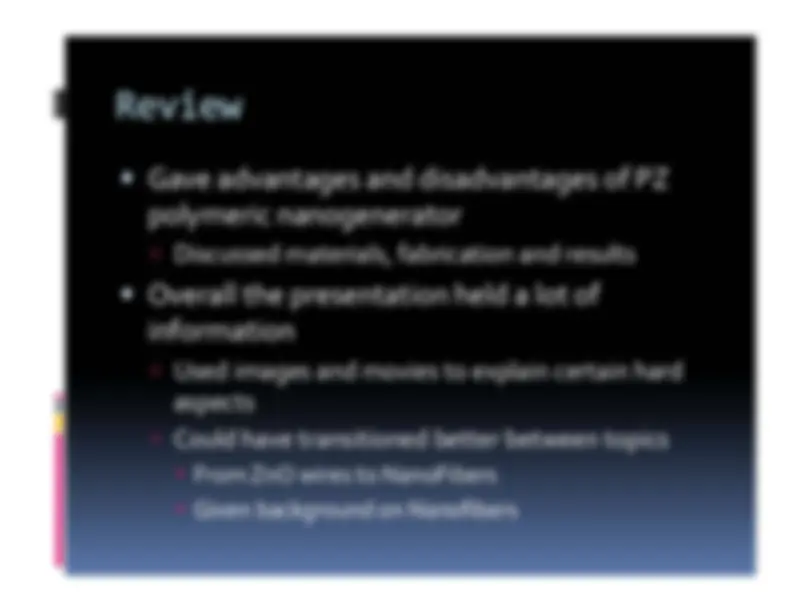
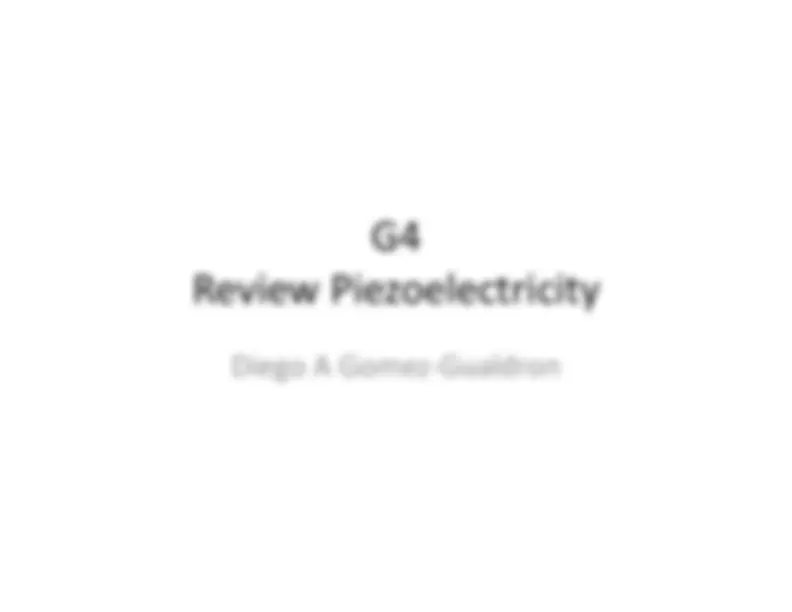
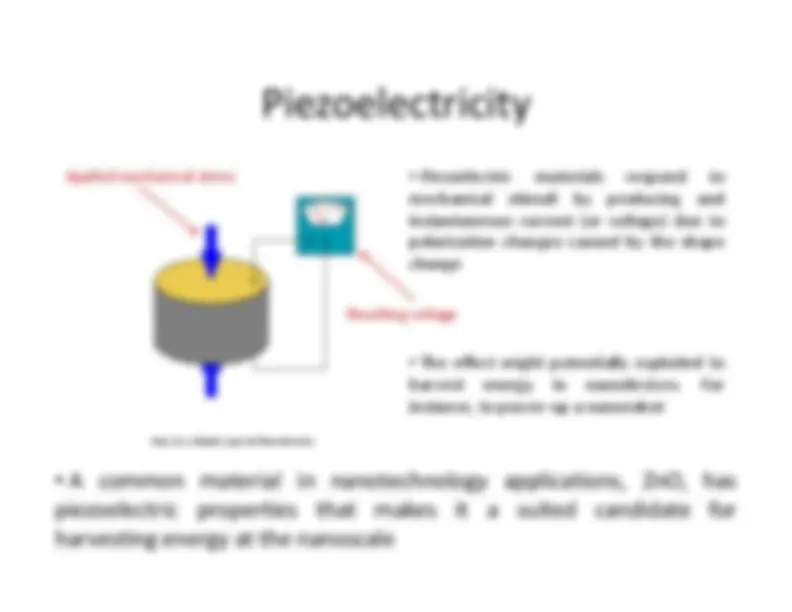
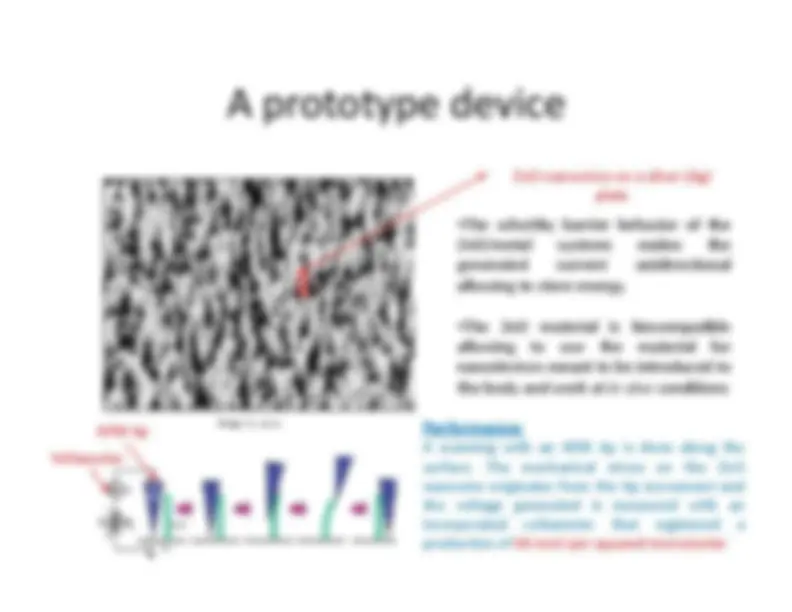
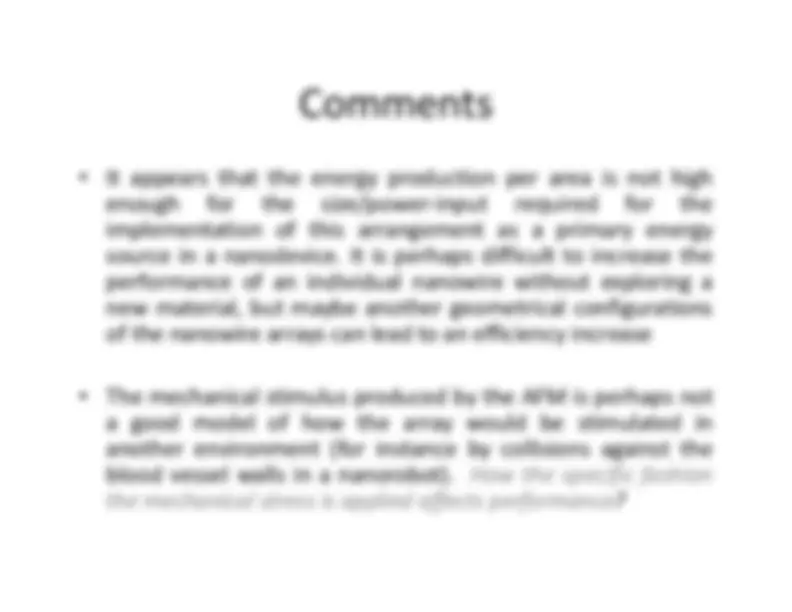
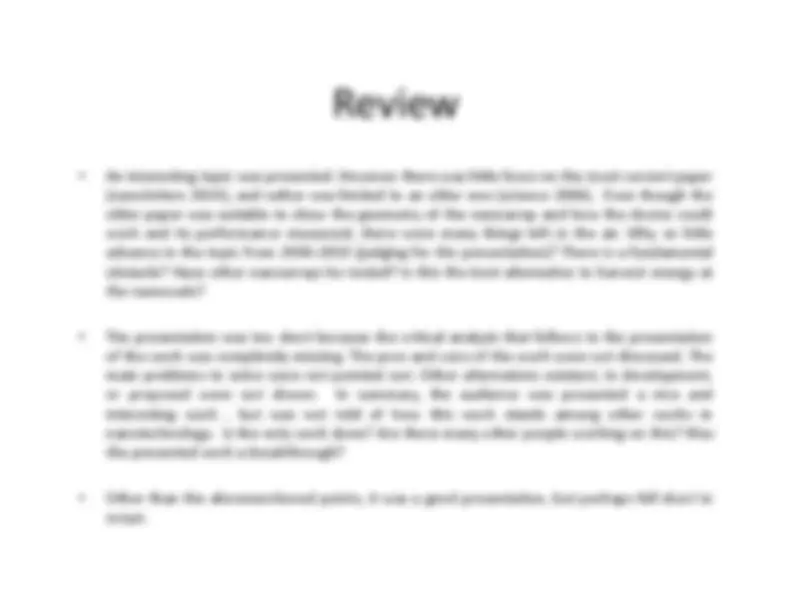
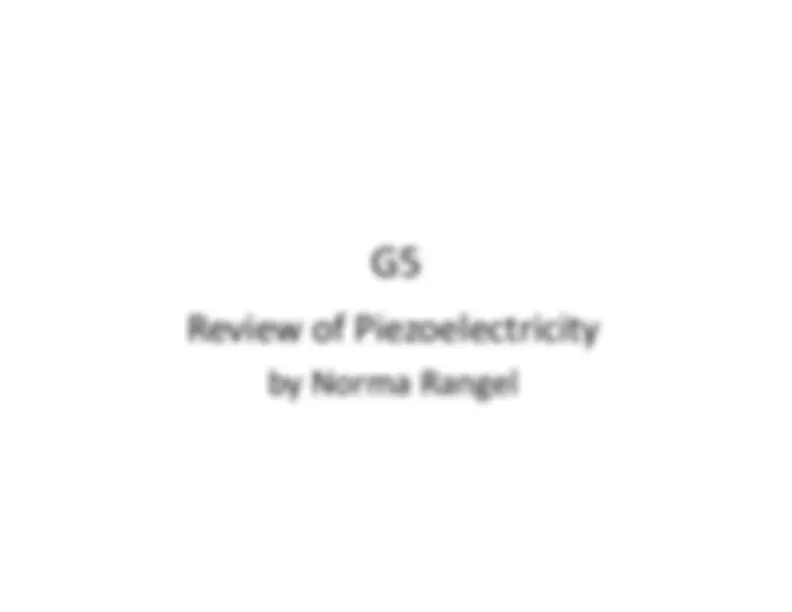
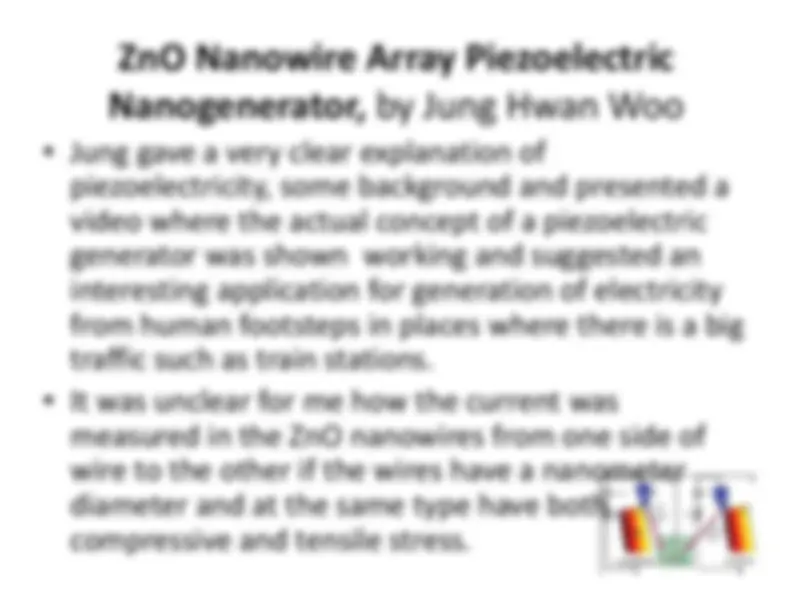


Study with the several resources on Docsity

Earn points by helping other students or get them with a premium plan


Prepare for your exams
Study with the several resources on Docsity

Earn points to download
Earn points by helping other students or get them with a premium plan
Community
Ask the community for help and clear up your study doubts
Discover the best universities in your country according to Docsity users
Free resources
Download our free guides on studying techniques, anxiety management strategies, and thesis advice from Docsity tutors
Mechanical Applications, Molecular Separation, Nano Solar Cells, Nanocatalysts, Nanoparticles in Medicine, Agriculture and Genomics, Nanotoxicology, Nanowire Photonics, NDR Molecular, Zinc Oxide Nanowire and many others topics are part of this course. Key points in this lecture are: Zinc Oxide Nanowire, Piezoelectric Nanogenerator, Piezoelectricity, Piezoelectric Generator, Nanotechnology Application, Fabrication of Nanoarrays, Simulated Strain Contour and Schottky Effect, Efficiency, Power Gene
Typology: Slides
1 / 33

This page cannot be seen from the preview
Don't miss anything!


























Harvests energy using PZ effect Example “Crowd Farm” – electricity generation from human footsteps in placessuch as train stations 1 Light flickering shown on YouTube 1 Wright, Sarah H (2007-07-25). "MIT duo sees people-powered "Crowd Farm"". MIT news. Massachusetts Institute of Technology http://web.mit.edu/newsoffice/2007/crowdfarm-0725.html
Biological application: In-situ real-time monitoring nanosensors and nanorobots Allows self-powered Piezoelectric nanogenerator using zinc oxide nanowire arrays Advantageous properties of ZnO Piezoelectric Semiconductive Biologically safe and biocompatible Diverse and abundant Nano-applications NWs, Nanobelts, Nanosprings, nanorings, nanobows, nanohelices Schottky barrier between the metal and ZnO
ZnO nanowire moved by AFM tip and strained Tensile on outer surface Compressive on inner surface AFM tip is Pt covered Si cone at 70° Electric field along the z-direction within the NW is createddue to the PZ effect PZ field direction is parallel to the z axis at the outer surfaceand anti parallel to the z axis at the inner surface AFM scan over the nanowire Wang. Z. L., et. al.
Simulated strain contour and Schottky effect Wang. Z. L., et. al.
Power generation ~0.5 pW per tip x 20/μm 2 ≈ 10 pW/μm 2 A NW array of size 10 μm x 10 μm would yield appreciable power for anano-device (~ 1 nW)
Direct-write piezoelectric polymeric nanogenerator with highenergy conversion efficiency In place of ZnO, Polyvinylidene fluoride (PVDF) used Advantages Higher flexibility Reduced physical resistance Good PZ Chemical stability Disadvantages α -, β -, and γ -crystalline phases exist β -PVDF is used for best PZ effect Must be mechanically stretched and electrically poled
Results 5-30 mV at 0.5-3 nA => 2.5-90 pW Energy conversion efficiency ~12.5% average ~21.8% peak Chang, C., et. al.
Wang, Z. L., Song, J., Piezoelectric Nanogenerators Based onZinc Oxide Nanowire Arrays. Science, 2006, 312 (5771), 242-
Chang, C., Tran, V. H., Wang, J., Fuh, Y., Lin, L., Direct-Write Piezoelectric Polymeric nanogenerator with HighEnergy Conversion Efficiency. Nano Letters, 2010, 10, 726-
G Rebuttal : Piezoelectricity
G Piezoelectric Nanogenerator Review